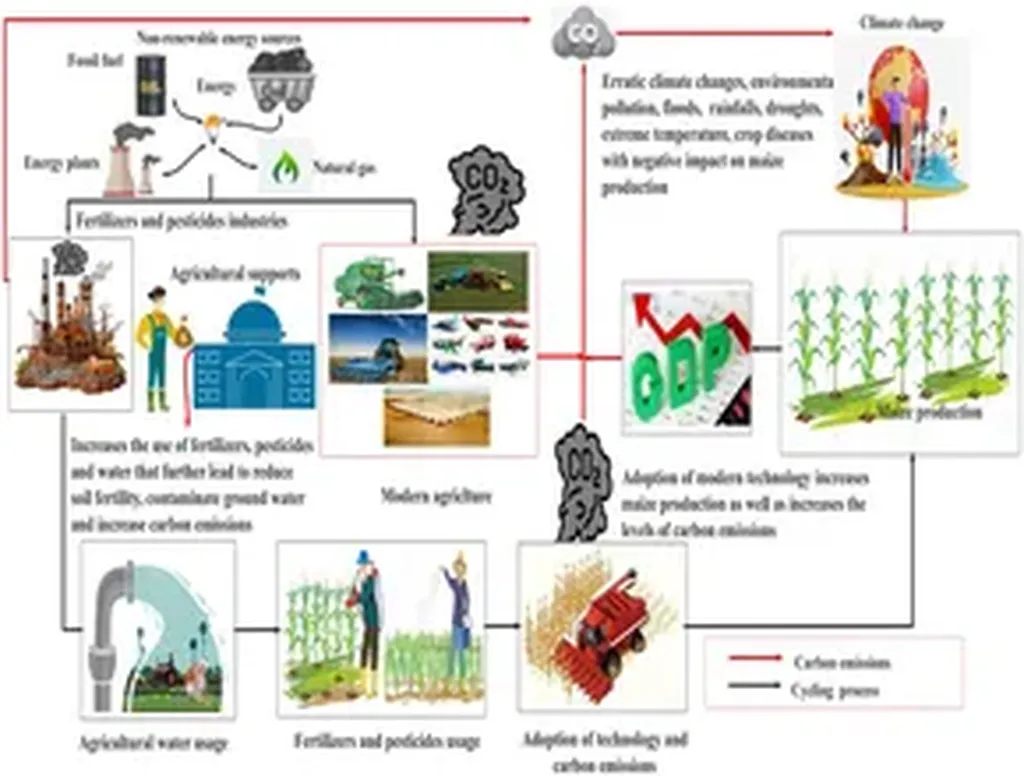In the heart of China’s agricultural landscape, a groundbreaking study is reshaping our understanding of the drivers behind economic growth in the sector. Led by Meseret C. Abate from the Research Institution of Rural Revitalization at Hunan University of Science and Engineering, this research employs a dynamic autoregressive distributed lag (ARDL) simulation model to dissect the intricate relationship between sustainable agricultural inputs and economic growth. The findings, recently published in *Frontiers in Sustainable Food Systems* (translated to “Frontiers in Sustainable Food Systems”), offer a compelling narrative that could steer future agricultural policies and investments.
The study, which analyzed annual time series data from 1983 to 2023, reveals that the expansion of irrigated areas and increased usage of chemical fertilizers are significant contributors to agricultural economic growth, both in the short and long run. “Our findings underscore the critical role that sustainable agricultural inputs play in driving economic growth in the agricultural sector,” Abate explains. “This is particularly evident in the case of irrigated areas and chemical fertilizers, which have shown a consistent positive impact.”
However, the study also highlights some unexpected nuances. Agricultural mechanization, often touted as a key driver of growth, was found to positively affect growth only in the short run. Moreover, the variable representing crop-sown land did not exhibit a statistically significant impact on agricultural economic growth across both time frames. “This suggests that the benefits of mechanization may be more nuanced than previously thought, and that simply expanding sown land may not be as effective in driving economic growth as other inputs,” Abate notes.
The research also employed novel DYARDL simulations to assess the implications of 10% positive and negative shocks, further substantiating the short-run and long-run analysis outcomes. These simulations provide a robust framework for understanding the potential impacts of policy changes or external shocks on agricultural economic growth.
So, what does this mean for the future of agriculture in China and beyond? The insights generated from this study could shape future developments in the field, providing evidence-based recommendations for fostering resilient, low-input systems that support global food security and agro-environmental sustainability. For instance, the findings could inform policies aimed at expanding irrigated areas and optimizing the use of chemical fertilizers, while also encouraging a more nuanced approach to agricultural mechanization.
Moreover, the study’s emphasis on sustainable agricultural inputs aligns with the growing global focus on sustainable development and climate resilience. As the world grapples with the impacts of climate change, understanding the drivers of agricultural economic growth becomes increasingly crucial. This research offers a valuable contribution to this ongoing conversation, providing a solid foundation for future studies and policy discussions.
In the words of Abate, “Our hope is that this research will not only advance our understanding of the complex dynamics at play in agricultural economic growth but also inform policies and practices that promote sustainable and resilient agricultural systems.” As we look to the future, the insights from this study will undoubtedly play a pivotal role in shaping the trajectory of agricultural development, both in China and on the global stage.

